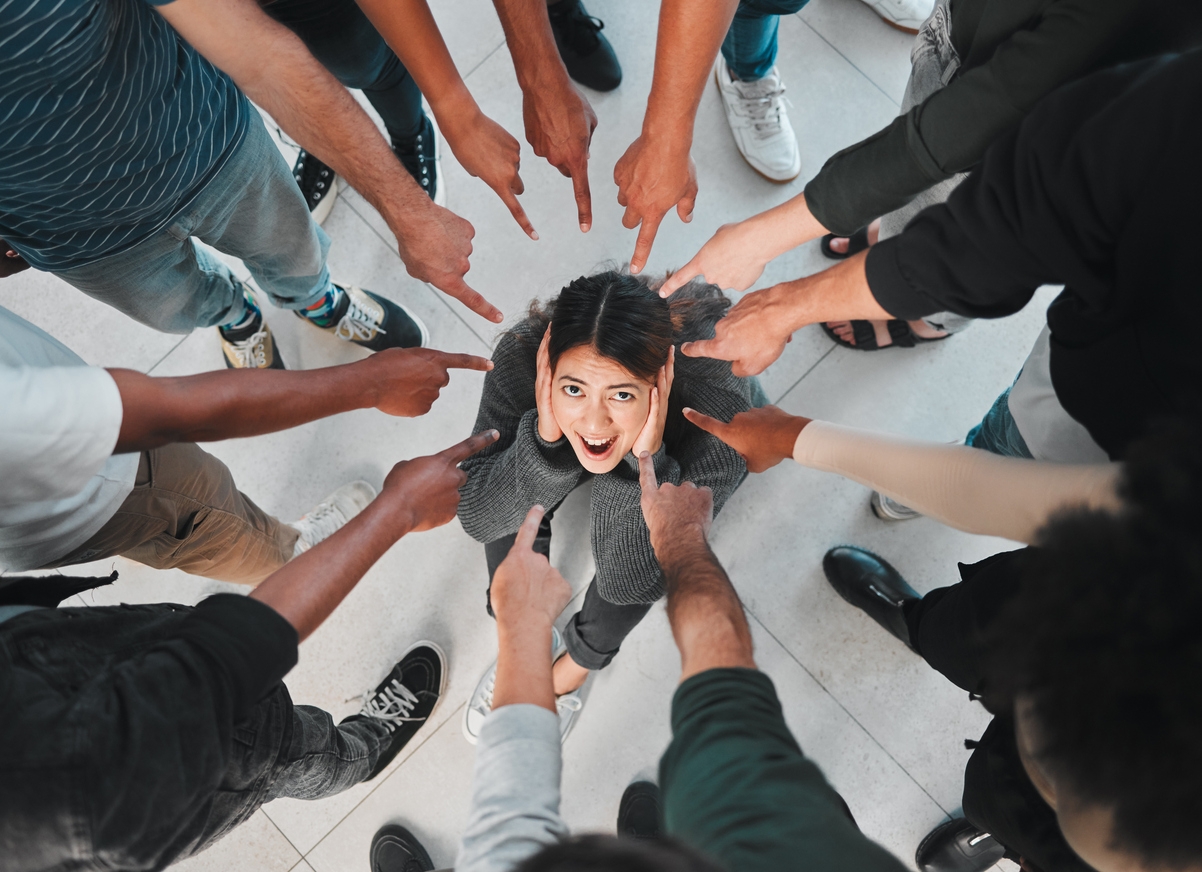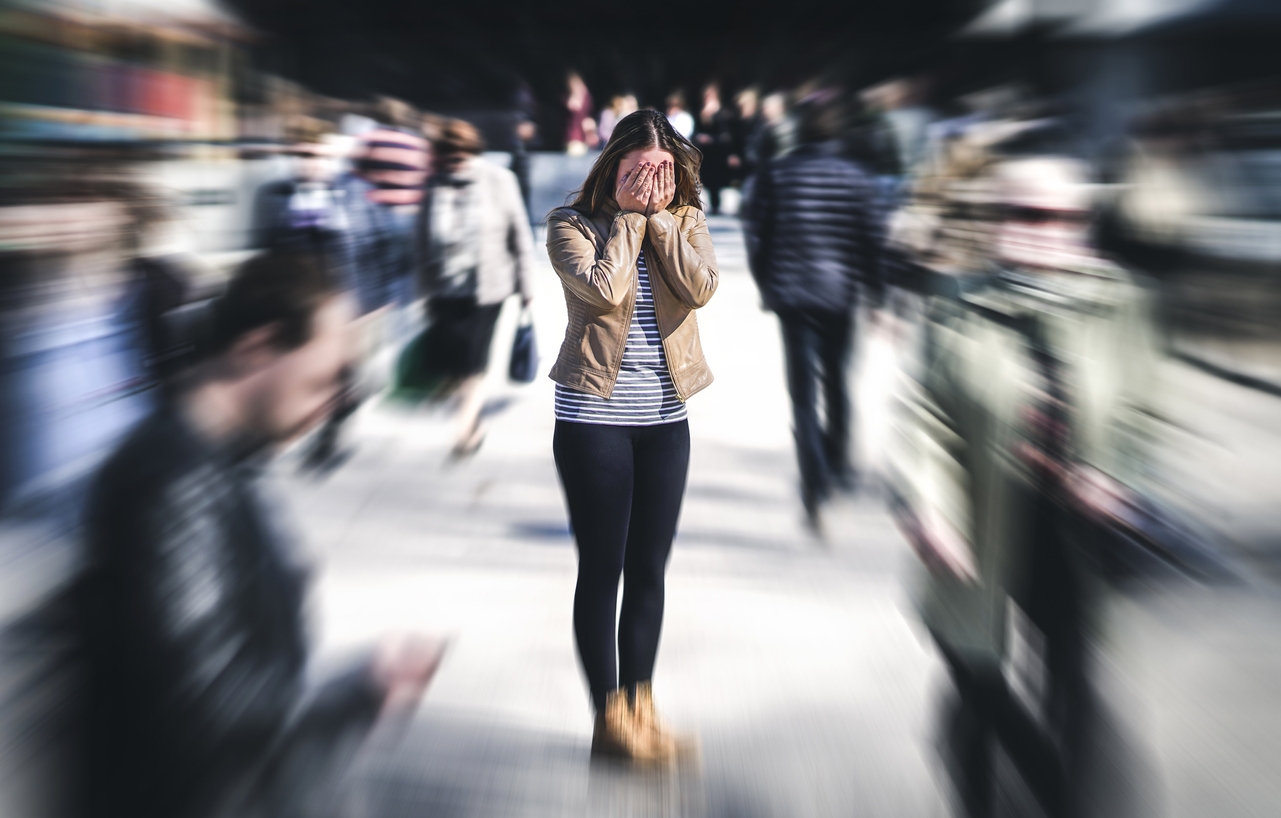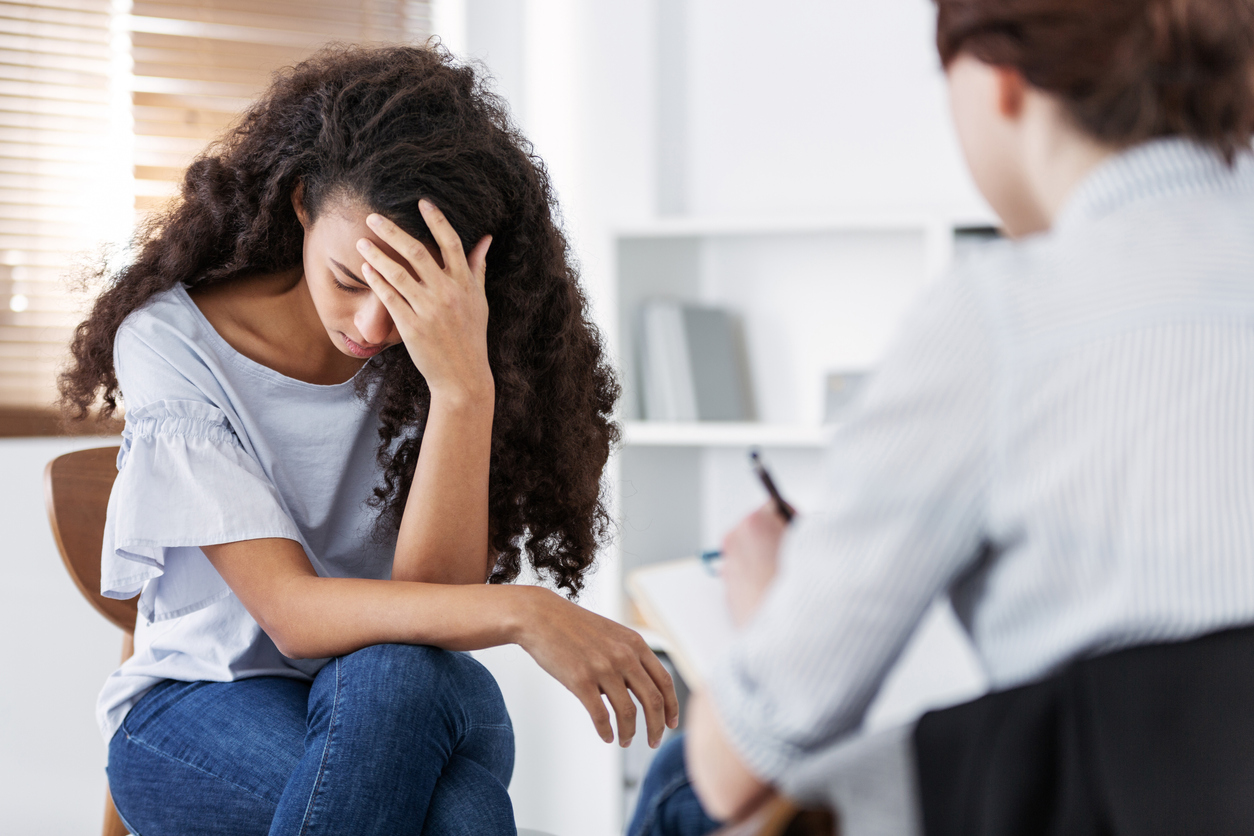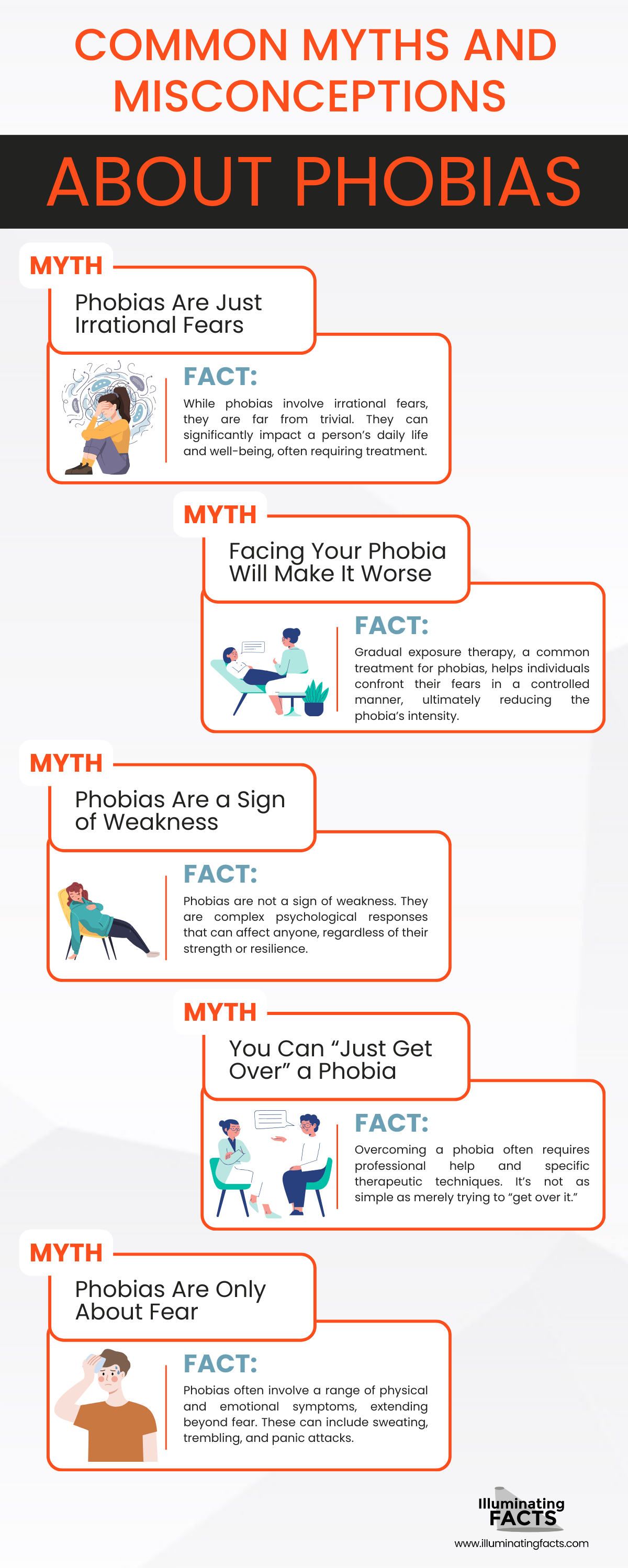Phobias are intense and often irrational fears. They are not merely moments of discomfort but experiences that can profoundly affect an individual’s life. From heights to spiders, phobias can affect anyone, anywhere. They are an intricate part of the human experience, affecting millions in the US alone. [1] Understanding what happens when you experience a phobia goes beyond a matter of mere curiosity. Knowing its mechanisms is not only beneficial for individuals but also for a society striving to support those in need.
This post delves into the world of phobias. It sheds light on their prevalence, triggers, and the physiological responses they provoke. It sheds light on the scope of this issue. emphasizing the importance of empathetic understanding and support for those who grapple with phobias.
The Science Behind Phobias
Phobias have a profound basis in the science of the brain and the body’s response to perceived threats.
Neurological Aspects
Since this extreme fear is rooted in the human brain, phobias have a substantial neurological dimension.
Role of the Amygdala
One key player in this psychological drama is the amygdala. Phobias often find their roots in this small almond-shaped structure in the brain. [2] It plays a pivotal role in processing fear and emotional responses. When faced with a phobic trigger, the amygdala can activate a cascade of reactions, triggering intense fear and anxiety.
Fight or Flight Response
Phobias activate the body’s fight or flight response, an ancient survival mechanism. When confronted with a phobic stimulus, the brain signals the release of stress hormones, preparing the body to either confront or escape the perceived threat. This response involves the release of adrenaline, preparing the body for quick action. In phobic reactions, this response can be triggered even in non-life-threatening situations. [3]
Facts and Figures
Brain Regions Involved: Besides the amygdala, other brain regions play roles in phobic responses. [4]
| Brain Region | Role in Phobias |
| Amygdala | Central in processing fear and emotional responses. |
| Hippocampus | Involved in memory formation and recall of phobic events. |
| Prefrontal Cortex | Plays a role in decision-making and regulating phobic responses. |
These brain regions work in tandem, contributing to the formation, persistence, and regulation of phobias.
Hormonal Changes During a Phobic Reaction: When experiencing a phobia, the body undergoes hormonal changes. Adrenaline and cortisol levels rise, preparing the body for action. [5]
| Hormone | Effects During a Phobic Attack |
| Adrenaline (Epinephrine) |
|
| Cortisol |
|
These hormonal fluctuations can lead to physical symptoms like trembling and increased heart rate.
Physical Symptoms of Phobias
Phobias extend beyond mere mental distress, they can trigger a cascade of physical responses that are often intense and unsettling. When confronted with their feared objects or situations, individuals may experience a range of physical symptoms, from a racing heart and sweating palms to nausea and dizziness. [6]
| Physical Symptoms | Effect |
| Heart Rate | Rapid heartbeat and palpitations. |
| Sweating | Profuse sweating, often leading to clammy skin. |
| Trembling | Uncontrollable shaking or shivering due to anxiety. |
| Nausea | An upset stomach or feeling of nausea. |
| Dizziness | A sensation of lightheadedness or dizziness. |
Increased Heart Rate
When confronted with a phobic trigger, the heart often races, pumping blood faster to prepare for action. This heightened heart rate can lead to palpitations and a feeling of unease.
Sweating
Profuse sweating is a common phobic reaction. It’s the body’s way of regulating temperature during the stress response. Sweating can lead to clammy skin and discomfort.
Trembling
Muscle trembling or shivering can occur as the body readies itself for either confronting or escaping the perceived threat.
Nausea
Phobic reactions can lead to feelings of nausea or even vomiting. This response is partly due to the redirection of blood flow away from the digestive system during the fight or flight response.
Dizziness
Dizziness and lightheadedness may accompany phobic reactions, often attributed to changes in blood pressure and the body’s attempt to allocate resources for the perceived threat.
These physical symptoms can be distressing but are a natural part of the body’s response to perceived threats when facing a phobia.
Facts and Figures
Phobias can vary in intensity, from mild to severe. [7] The severity of a phobia is often assessed based on the level of disruption it causes in an individual’s life. While some may manage their phobia without significant interference, others may find it profoundly affecting their daily activities, relationships, and overall well-being.
Psychological Impact
Phobias extend their influence beyond physical wellbeing to have a profound impact on psychological health. These fears aren’t confined to specific moments, they extend their influence into daily life too, affecting relationships, work, and the overall quality of life. [8]
Psychological Impact | Description |
Anxiety and Panic | Phobias often lead to heightened anxiety and panic attacks when confronted with the phobic trigger. |
Avoidance Behavior | Individuals with phobias tend to avoid situations or places associated with their fears, limiting their activities. |
Social Isolation | Severe phobias can lead to social isolation as individuals withdraw from social interactions to avoid triggers. |
Impaired Quality of Life | Phobias can significantly diminish one's overall quality of life, affecting daily functioning and happiness. |
Coexisting Disorders | Phobias can co-occur with other mental health conditions, amplifying their psychological impact. |
Anxiety and Depression
Phobic individuals often experience heightened anxiety levels, particularly when confronted with their triggers. This ongoing anxiety can lead to chronic stress. This anxiety can be overwhelming, leading to panic attacks in severe cases.
Persistent phobias can contribute to feelings of sadness and hopelessness
This takes a significant toll on one’s mental well-being, potentially leading to depression as they grapple with the limitations phobias impose on their lives.
Impact on Daily Life
Phobias can significantly affect various aspects of daily life:
- Social Interactions: Phobias may limit social interactions and participation in activities, leading to isolation.
- Occupational Impacts: Phobias can hinder career opportunities and job performance if they relate to workplace situations or requirements.
- Quality of Life: The constant presence of phobic fears can diminish overall quality of life, affecting personal relationships, leisure activities, and overall happiness.
Understanding the psychological consequences of phobias highlights the importance of timely intervention and support for affected individuals.
Facts and Figures
Comorbidity with Other Mental Health Conditions: Phobias often co-occur with other mental health conditions. Studies indicate that individuals with phobias may also experience comorbid disorders like generalized anxiety disorder, depression, or other specific phobias. [9] These overlapping conditions can complicate diagnosis and treatment.
Economic Impact: Phobias extend beyond personal suffering and have significant economic implications. [10] The economic burden of phobias encompasses healthcare costs, decreased work productivity, and the financial impact on affected individuals. These factors collectively contribute to a substantial economic burden, affecting both individuals and society at large.
Treatment Options
Phobias, although distressing, are treatable conditions. Various approaches can help individuals manage and overcome their fears.
Cognitive Behavioral Therapy (CBT)
CBT is a widely recognized and effective treatment for phobias. It involves identifying and challenging irrational thoughts and beliefs related to the phobia. [11] Through CBT, individuals learn coping strategies and desensitization techniques to reduce fear responses gradually. It can empower individuals to confront and manage their phobias.
Technique | Description |
Exposure Therapy | Gradual exposure to the phobic stimulus, helping reduce fear and anxiety over time. |
Cognitive Restructuring | Identifying and challenging irrational thoughts and beliefs related to the phobia. |
Relaxation Techniques | Teaching relaxation methods to manage physical symptoms of anxiety during phobic situations. |
Systematic Desensitization | Gradual and controlled exposure to the phobic stimulus, paired with relaxation techniques. |
Behavioral Experiments | Conducting experiments to test the validity of phobic beliefs and reduce avoidance behaviors. |
Medication
In some cases, medication may be prescribed to alleviate the symptoms of phobias. [12] Antidepressants and anti-anxiety medications are the most prescription drugs for such situations. Medication is often considered when phobias are severe, significantly impairing daily life, or when combined with therapy for better results. Medication should be carefully monitored and prescribed by a healthcare professional.
Medication | Description |
Selective Serotonin Reuptake Inhibitors (SSRIs) | Antidepressants that can help manage anxiety and panic symptoms associated with phobias. |
Benzodiazepines | Anti-anxiety medications that provide short-term relief from anxiety symptoms, but may carry risks of dependence. |
Beta-Blockers | Medications that block the effects of adrenaline, reducing physical symptoms like rapid heartbeat. |
Common Myths and Misconceptions
Myth: Phobias Are Just Irrational Fears
Fact: While phobias involve irrational fears, they are far from trivial. They can significantly impact a person’s daily life and well-being, often requiring treatment.
Myth: Facing Your Phobia Will Make It Worse
Fact: Gradual exposure therapy, a common treatment for phobias, helps individuals confront their fears in a controlled manner, ultimately reducing the phobia’s intensity.
Myth: Phobias Are a Sign of Weakness
Fact: Phobias are not a sign of weakness. They are complex psychological responses that can affect anyone, regardless of their strength or resilience.
Myth: You Can “Just Get Over” a Phobia
Fact: Overcoming a phobia often requires professional help and specific therapeutic techniques. It’s not as simple as merely trying to “get over it.”
Myth: Phobias Are Only About Fear
Fact: Phobias often involve a range of physical and emotional symptoms, extending beyond fear. These can include sweating, trembling, and panic attacks.
Ten Interesting Facts About Phobias
1. Most Common Phobia
The most common phobia worldwide is arachnophobia, the fear of spiders. It affects a significant portion of the population. [13] [14] [15]
2. Phobias and Genetics
Studies suggest that there may be a genetic component to phobias, with a higher likelihood of developing a phobia if a close family member has one. [16] [17] [18]
3. Cultural Differences
Phobias can vary across cultures. For example, taijin kyofusho is a culture-bound phobia primarily observed in Japan, involving a fear of offending or embarrassing others. [19] [20]
4. Animal Phobias
Beyond common animal phobias like the ones for the most dangerous snakes and spiders, there are more unusual animal-related phobias, such as cynophobia (fear of dogs) and ornithophobia (fear of birds). [21] [22] [23]
5. Celebrity Phobias
Even celebrities are not immune to phobias. Some well-known individuals have openly discussed their phobias, raising awareness and reducing stigma. [24]
6. Phobias and Technology
The digital age has introduced new phobias, such as nomophobia (fear of being without one’s mobile phone) [25] and cyberphobia (fear of computers) [26]
7. Historical Phobias
Throughout history, various phobias have emerged, often reflecting the fears and anxieties of their times. Examples include turophobia (fear of cheese) [27] and Taphophobia (fear of being buried alive) [28] in the Victorian era.
8. Phobias in Literature and Film
Phobias have been a recurring theme in literature and film, adding depth to character development and plotlines. [29] [30]
9. Phobias and Gender
Some phobias are more prevalent in one gender than the other. For instance, social phobia is more commonly diagnosed in women. [31] [32]
10. Unusual Phobias
Phobias can be incredibly diverse, ranging from the fear of peanut butter sticking to the roof of the mouth (arachibutyrophobia) to the fear of long words (hippopotomonstrosesquipedaliophobia). [33] [34]
Conclusion
In understanding phobias, we uncover the intricate web of emotions, biology, and psychology that underlie our fears. Far from mere irrationality, phobias are complex phenomena that touch the lives of countless individuals across the globe.
With knowledge and compassion, we can offer support to those grappling with phobias. For this purpose, it is essential to dispel myths and embrace a deeper understanding of the challenges they face. In doing so, we foster a more empathetic and inclusive world, where the diverse landscape of fears is met with understanding and acceptance.
References
- HealthMatch Pty Ltd. (2022, February 20). More than nerves: The six types of anxiety disorders. HealthMatch. https://healthmatch.io/anxiety/types-of-anxiety-disorders#types-of-anxiety-disorders
- Martos, C. (2021, February 3). Phobias and the brain: Eliminating phobias. NeuronUP. Web platform of cognitive rehabilitation ★★★★★. https://neuronup.us/cognitive-stimulation-news/mental-disorder/anxiety-disorder/phobia/phobias-and-the-brain-eliminating-phobias/?amp=1
- The fight-or-Flight response prepares your body to take action. (2009, October 28). Verywell Mind. https://www.verywellmind.com/what-is-the-fight-or-flight-response-2795194
- What happens in the brain when we feel fear. (2017, October 27). Smithsonian Magazine. https://www.smithsonianmag.com/science-nature/what-happens-brain-feel-fear-180966992/
- Endocrine and cardiovascular responses during phobic anxiety. (n.d.). PubMed. https://pubmed.ncbi.nlm.nih.gov/3895277/
- Symptoms – Phobias. (2021, February 15). nhs.uk. https://www.nhs.uk/mental-health/conditions/phobias/symptoms/
- Learn about phobias. (2022, June 20). The Phobia Solution. https://phobiasolution.com/learn-about-phobias
- Mazzanti, G. (2023, June 8). Understanding the impact of phobias in daily life. oVRcome. https://www.google.com/amp/s/www.ovrcome.io/amp/understanding-the-impact-of-phobias-in-daily-life
- Associations of specific phobia and its subtypes with physical diseases: An adult community study. (n.d.). PubMed Central (PMC). https://www.ncbi.nlm.nih.gov/pmc/articles/PMC4875678/
- The economic consequences of social phobia. (n.d.). PubMed. https://pubmed.ncbi.nlm.nih.gov/12063150/
- Treatment – Phobias. (2021, February 15). nhs.uk. https://www.nhs.uk/mental-health/conditions/phobias/treatment/
- How taking medications can help treat different phobias. (2008, February 13). Verywell Mind. https://www.verywellmind.com/medications-for-phobias-2672007
- Arachnophobia (Fear of spiders): Overview & treatment. (n.d.). Cleveland Clinic. https://my.clevelandclinic.org/health/diseases/21852-arachnophobia-fear-of-spiders
- Forgey, B. (n.d.). 7 most common phobias & how they affect patients. Google. https://www.google.com/amp/s/www.psychiatryassociatesofbatonrouge.com/blog/7-most-common-phobias-how-they-affect-patients%3fhs_amp=true
- Arachnophobia. (2022, October 14). Anxiety UK. https://www.anxietyuk.org.uk/anxiety-type/arachnophobia/
- Panic and phobic anxiety: Defining phenotypes for genetic studies. (1998, September 1). American Journal of Psychiatry. https://ajp.psychiatryonline.org/doi/10.1176/ajp.155.9.1152
- Genes trigger phobias in kids and teens. New Scientist. https://www.newscientist.com/article/dn13607-genes-trigger-phobias-in-kids-and-teens/
- Could you have inherited your phobias? (2008, February 19). Verywell Mind. https://www.verywellmind.com/research-findings-on-the-genetics-of-phobias-2671935
- A Japanese form of social anxiety (taijin kyofusho): Frequency and correlates in two generations of the same family. (n.d.). PubMed. https://pubmed.ncbi.nlm.nih.gov/21911434/
- Taijin-kyofu-Sho: A subtype of social anxiety. (2013, September 2). SCIRP Open Access. https://www.scirp.org/html/8-1420204_37860.htm
- Mancini, M. (2019, February 15). 11 lesser-known animal phobias. Mental Floss. https://www.mentalfloss.com/article/574381/animal-phobias
- Just a moment… (n.d.). Just a moment… https://a-z-animals.com/blog/fear-of-animals-the-big-list/
- Zoophobia (Fear of animals): Causes, symptoms & treatment. (n.d.). Cleveland Clinic. https://my.clevelandclinic.org/health/diseases/22727-zoophobia-fear-of-animalsZoophobia (Fear of animals): Causes, symptoms & treatment. (n.d.). Cleveland Clinic. https://my.clevelandclinic.org/health/diseases/22727-zoophobia-fear-of-animals
- Editorial Staff. (2016, July 19). 26 surprising celebrity phobias that famous people suffer from. FEAROF. https://www.fearof.net/surprising-celebrity-phobias-that-famous-people-have/
- Nomophobia: NO mobile phone phobia. (n.d.). PubMed Central (PMC). https://www.ncbi.nlm.nih.gov/pmc/articles/PMC6510111
- Cyberphobia (Fear of computers): Overview, causes & treatment. (n.d.). Cleveland Clinic. https://my.clevelandclinic.org/health/diseases/22543-cyberphobia-fear-of-computers
- Turophobia: Fear of cheese | FindATopDoc. (n.d.). Find a Doctor by Insurance | Best Local Doctor Reviews – FindaTopDoc. https://www.findatopdoc.com/Mental-Health/The-Real-Origins-of-These-20-Strange-Phobias/Turophobia-Fear-of-cheese
- What is Taphophobia? — GENTEEL & BARD. (2022, July 28). GENTEEL & BARD. https://www.google.com/amp/s/genteelandbard.com/southern-history-haunts-folklore-journal/2022/7/28/what-is-taphophobbiba%3fformat=amp
- Nast, C. (2020, October 7). 8 chilling movies that will tap into your worst fears and phobias, on Netflix, Amazon Prime video and more. Vogue India. https://www.vogue.in/culture-and-living/content/chilling-movies-on-fears-phobias-on-netflix-amazon-prime-video-and-more
- The portrayal of societal fears in popular culture. (2017, November 22). Digital Patmos – An e-Magazine on Apocalyptic and Dystopian Cultures. https://digitalpatmos.com/vol1issue1/2017/11/22/foreword/
- Just a moment… (n.d.). Just a moment… https://www.sciencedirect.com/science/article/abs/pii/0887618588900047
- An investigation of gender differences in social phobia. (n.d.). PubMed. https://pubmed.ncbi.nlm.nih.gov/9653680/
- What are the rarest phobias? (2022, July 29). Verywell Mind. https://www.verywellmind.com/what-are-the-rarest-phobias-5649656
- 21 rare, irrational, and weird phobias you’ve likely not heard of. (2022, July 27). The Recovery Village Drug and Alcohol Rehab. https://www.therecoveryvillage.com/mental-health/phobias/weird-phobias/







